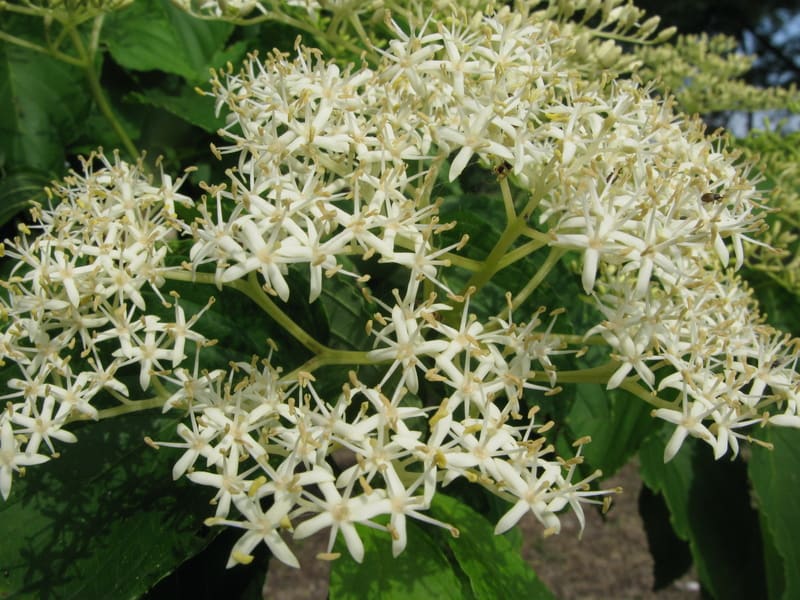Large-leaf dogwood, Bigleaf dogwood, Chinese dogwood (less common in English)
Cornus macrophylla

Warning: Despite the care taken in writing this sheet, it is essential to cross-reference sources before using or consuming any plant. When in doubt, consult a qualified professional
Permaculture uses
The fruits are edible, though not particularly flavorful raw; they are better cooked into jams or preserves. Young leaves can be consumed after being cooked. It offers excellent shade and can be used in hedgerows or as a windbreak. The wood can be used for crafts. Provides habitat and food for wildlife, particularly birds.
Permapeople description
Cornus macrophylla is a species of dogwood native to eastern Asia, from the Himalayas east to Japan and the Philippines. It is a deciduous tree growing to 10-15 meters tall.
Botanical description
Cornus macrophylla is a deciduous tree reaching heights of 10-20 meters. The bark is grayish-brown and slightly furrowed. Leaves are large, ovate to elliptic, measuring 10-20 cm long and 5-10 cm wide, with prominent veins. Flowers are small, creamy-white, and borne in flat-topped cymes 10-15 cm across, appearing in late spring to early summer. Fruits are drupes, approximately 1 cm in diameter, ripening to dark blue-black in late summer to early autumn.
Companion planting
Generally a good companion plant due to its tolerance of shade and ability to provide shelter. Avoid planting near plants that are highly susceptible to fungal diseases, as dogwoods can be prone to certain fungal issues in humid conditions. Good companions include woodland understory plants that benefit from shade and slightly acidic soil.
Propagation methods
Propagation is typically achieved through seed sowing in the autumn or spring after stratification. Cuttings of semi-hardwood can be taken in summer. Root suckers, if produced, can be divided.
History and traditions
In traditional Chinese medicine, parts of the plant have been used for various purposes, though specific uses for Cornus macrophylla are less documented compared to Cornus officinalis. The wood has historically been used for small tools and implements in regions where it is native.
Usage calendar
Flowering: May-June. Fruit ripening: August-September. Seed collection: September-October. Planting: Autumn or spring. Pruning: Late winter or early spring, if needed to remove dead or crossing branches.
